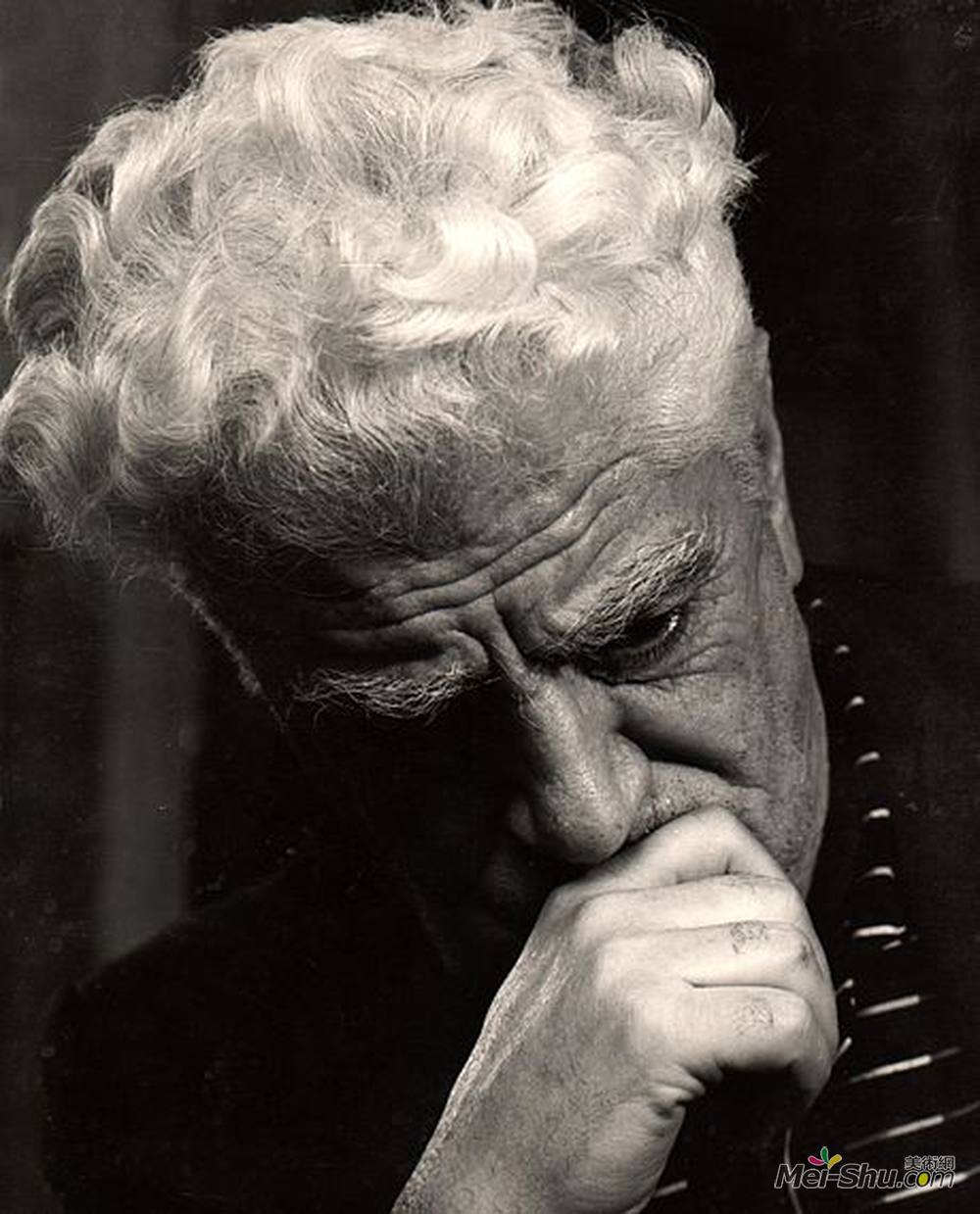
爱德华伊莎贝克(Eduard Isabekyan)
艺术家: 爱德华伊莎贝克
生于: 1914年11月14日;火鸡
卒于: 2007年8月17日;亚美尼亚
国籍: 亚美尼亚
流派: 象征主义
领域: 绘画,绘画
《伊莎贝克》是一个多体裁的艺术家。他创作了广泛而有价值的构图、肖像、山水、图形、主题作品、书籍设计。
他的艺术基础是人文主义和深厚的爱国主义,灵感的源泉是亚美尼亚人的见解,这些见解表现在萨斯的大卫人物身上。翁、茨维纳、萨纳萨、巴格达萨、大卫·贝克、萨亚特·诺瓦、阿克塞尔·巴昆特、塔曼西纳等民族伟大人物形象。在大爱国战争期间,他描绘了苏联人民的英雄形象("Batthea city",1942,&Tanya",1946),亚美尼亚人民的民族解放斗争("David Beck",1945)。
Eduard Isabekyan是主题的创始人。亚美尼亚的构成体裁。他的艺术的基础是亚美尼亚民族的历史和未来,其骄傲的姿态和狂喜的潜力。伊莎贝克的主题构成体裁是苏联时期亚美尼亚美术的成就。年轻的大卫";(1956年,亚美尼亚国家美术馆),"1903年哈格帕特农民起义";(1957年),"回复Hazkert";(1960年,亚美尼亚国家美术馆)和其他绘画以其不朽的表现力、动态的作品而著称。伊莎白肯的一些绘画以人与自然的有机交流为特征:"老人来自拜拉干和阿尔塔瓦齐克教堂"(1956),"阿克塞尔Bakunts";(1956),"Derenik Demirtchyan"(1960)";卷曲男孩";(1964)&";SayaNoV&Ap];(1964)。苏联时期亚美尼亚画像最好的例子之一是“母亲的肖像画”(1944)。他的风景的主题中心是对亚美尼亚自然、古堡垒和寺庙的史诗般的描述:"在Tatev"(1959),"牛过河&Bridge"以艺术的饱和度为特点:"Ho.l"(1956年,亚美尼亚国家美术馆),".the well";("他们没有回来",1965),&vIn the shade the treesv(1966),&Artavazd's."1966)。德涅克·德米尔奇安的《瓦达南》和《塞罗·坎扎迪安》的插图和米凯塔·斯帕雷特·安普的小说也是众所周知的。
伊莎白肯是许多绘画和画家阿彭尼克·纳尔班丹的一系列图形的作者。
Artist :Eduard Isabekyan
Additional Name :Էդուարդ Հմայակի Իսաբեկյան
Born : Turkey
Died : Armenia
Nationality :Armenian
Art Movement :Symbolism
Field :painting,drawing
Isabekyan is a multi-genre artist. He created extensive and high value compositional paintings, portraits, landscapes, graphics, thematic compositions, book designs.
The basis of his art is humanism and deep patriotism, the sources of his inspiration are Armenian insights, which are expressed in the characters of David of Sassoun, Tsovinar, Sanasar, Baghdasar, David Beck, Sayat Nova, Aksel Bakunts, Tamantsiner and other characters of great national figures. During the Great Patriotic War he depicted the heroic image of Soviet people ("Battle for a city", 1942, "Tanya", 1946), national liberation struggle of the Armenian people ("David Beck", 1945).
Eduard Isabekyan was the founder of thematic compositional genre in Armenia. The basis of his art is the history of Armenian nation and its future, its proud posture and the ecstatic potential. Isabekyan’s works of thematic compositional genre are the achievement of Armenian fine art of the Soviet period. "Young David" (1956, The National Gallery of Armenia), "The Revolt of Haghpat Peasants in 1903" (1957), "Reply to Hazkert" (1960, The National Gallery of Armenia) and other paintings distinguish by their monumental expressiveness, dynamic composition and civic resonance.
A number of Isabekyan’s paintings are characterized by organic intercourse of a man and the native nature: "Old Man from Byurakan and the Artavazik Church" (1956), "Aksel Bakunts" (1956), "Derenik Demirtchyan" (1960), "Curly Boy" (1964), "Sayat Nova" (1964). One of the best examples of Armenian portraiture of Soviet period is the "Mother’s portrait" painting (1944). The thematic center of his landscapes is the epic description of Armenian nature, ancient fortresses and temples: "In the Canyon of Tatev" (1959), "The Oxen Crossing the River by the Bridge" (1959), "Khndzoresk" (1962).
Many paintings are distinguished by artistic saturation: "Horovel" (1956, The National Gallery of Armenia), "Near the well" ("They didn’t come back", 1965), vIn the shade of the treesv (1966), "Artavazd’s death" (1966). The illustrations of Derenik Demirchian’s "Vardananq"[5] and Sero Khanzadyan’s "Mkhitar Sparapet" novels are also commonly known.
Isabekyan is the author of a number of drawings and the series of graphics devoted to painter Arpenik Nalbandyan.